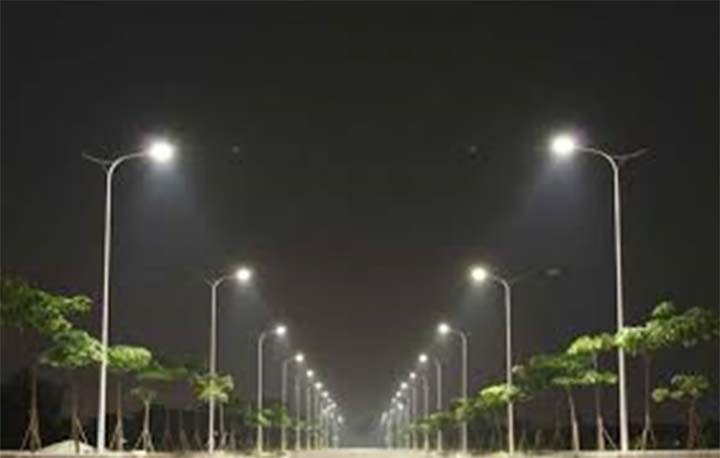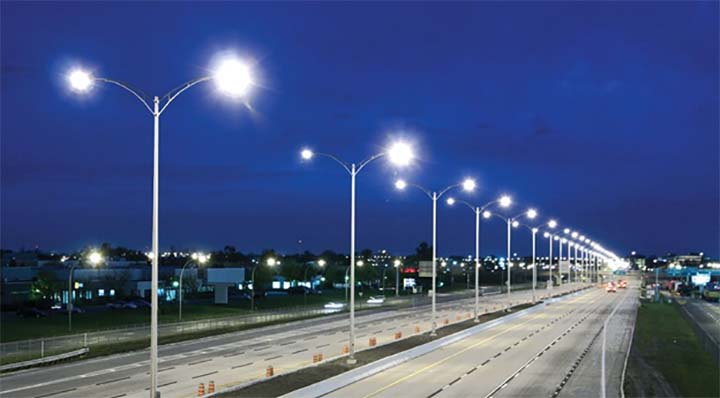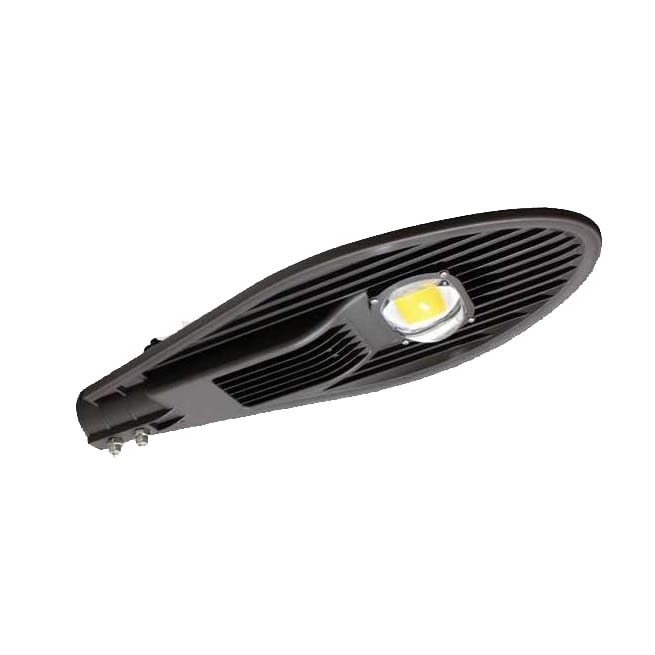Street Lighting
Street lights are lights that are used for street lighting at night so pedestrians, cyclists and motorists can see more clearly the road that will be traversed at night, so as to improve traffic safety and security of road users.
Various Types of Street Lights
Urban infrastructure requires good street lighting, which has 3 forms of uses, in terms of security, economic use, and aesthetics.
Widely used street lights;
- HPL-N lamp
- SON-T lights
- LVD lamp
- Fluorescent lamps
- LED lights
HPL-N lamp
HPL-N is the product name of a type of fluorescent mercury lamp in Europe, in Australia and the United Kingdom called the name MBF, if in America it is often called X and DX, if in Japan it is called HF. The HPL-N lamp is a high-pressure fluorescent mercury lamp and is a family of tube lamps. The way this mercury lamp works is the same as a fluorescent tube lamp, whose light comes from electron discharges that occur in a brother.
There are 2 types of mercury lamps namely the inner tube or what is often called the Arc Tube and the outer tube or called a bulb. The tube is filled with mercury to make ultraviolet radiation and argon gas for starting. Furthermore the external bulb works as a tube and maintains temperature stability in the tube area. These lights require ballasts in electrical settings, typically ballasts for mercury lamps in the form of autotrafo reactors, still need to be seen its characteristics. Mercury lamps operate at low power, the principle is that the type of light produced by mercury lamps is the dominant ultraviolet radiation converted into visible light by coating the inner walls of the bulb with phosphor powder, applies also with fluorescent lamps.
HPL-N lamps, often called fluorescent high-pressure mercury lamps, have an average usage period of 12,000 ~ 20,000 hours. Medium flux of light produced between 1800 lumens to 54,200 lumens. This HPL-N lamp is often used for public street lighting because of its good color rendering.
SON-T lights
High pressure sodium street lights or SON-T lamps that work in conjunction with low pressure sodium street lights or SOX-E, ie the release of electrons in the tube. SON high pressure sodium lamps and SOX low pressure sodium are types of tube lamps or discharge lamps. This lamp has a gas pressure in the tube around 250 mm Hg which makes the working temperature of this tube high.
Same with HPL-N SON-T lamps require ballast autotrafo reactors that work at low power. The installation uses an ignitor as a voltage trigger from 220v to 0.5 kva. The principle of this type of light that is produced consists of 2 tubes namely gas cylinders or arcs and outer tubes or bulbs. The gas cylinder is forgotten material withstands high-temperature sodium vapor, for example stellox. In the tube filled with sodium and mercury. Mercury works to increase the gas pressure and the working voltage of the lamp. Fluorescent noble gas is also filled in the cylinder for starting. The
High pressure sodium street lights or SON-T lamps that work in conjunction with low pressure sodium street lights or SOX-E, ie the release of electrons in the tube. SON high pressure sodium lamps and SOX low pressure sodium are types of tube lamps or discharge lamps. This lamp has a gas pressure in the tube around 250 mm Hg which makes the working temperature of this tube high.
Same with HPL-N SON-T lamps require ballast autotrafo reactors that work at low power. The installation uses an ignitor as a voltage trigger from 220v to 0.5 kva. The principle of this type of light that is produced consists of 2 tubes namely gas cylinders or arcs and outer tubes or bulbs. The gas cylinder is forgotten material withstands high-temperature sodium vapor, for example stellox. In the tube filled with sodium and mercury. Mercury works to increase the gas pressure and the working voltage of the lamp. Fluorescent noble gas is also filled in the cylinder for starting. The outer bulb of the glass is separated from the outside air. This bulb works to prevent the gas cylinder from damage to chemicals and maintain the temperature stability of the gas cylinder.
LVD lamp
Is a high efficiency induction lamp that is used as a substitute for public street lighting (PJU) and spotlights. LVD lamps with small watts are capable of producing the equivalent of Metal Halide (MHL) lamps or Sodium lamps with greater power. The rest is the usage period or usage life reaches 100,000 hours. In general, PJU lamps use 80 watt LVD induction types with high efficiency, equivalent to 250w mercury lamps, which are bright and have a strong lifespan.
The LVD or Induction lighting system consists of 3 important parts;
- Ballasts with high frequency.
- Induction coil.
- The lights themselves.
The ballast produces a high frequency electric current and delivers it to the induction coil. The current through the coil fluctuates electromagnetic fields in attractive lamps which ionizes the gas atoms, emitting ultraviolet radiation. When this ultraviolet radiation comes into contact with phosphorus it produces light.
Because this induction lamp does not need a filament or electrode to ignite, it consumes much longer than conventional incandescent lamps, fluorescent lamps or lamps with gas media without making the lights turn black.
Much efficient operation with much reduced lumen depreciation even though this lamp is often turned on, even up to 60,000 hours this induction lamp still provides 80% of its light output.
Neon lights TL
Fluorescent lamps are often called TL lamps. This type is widely used because the power consumption is relatively small compared to a light bulb, besides TL lamps colder temperatures at the same usage. TL lamps have been widely used in the community for housing or industry, TL lamp benefits such as producing light output per watt higher than ordinary lamps (incandescent lamps). For example in a
study measuring 32 watts of TL lamps produced 1700 lumens at a distance of 1 meter while 75 watts of ordinary light bulbs (with tungsten filaments) produced 1200 lumens. In other words, the efficiency ratio of TL lamps and light bulbs 53: 16. Efficiency is defined as the result of the strength of light divided by the electrical power used.
Although TL lamps have many advantages for power savings, they also have disadvantages;
- High cost for purchasing TL lamp sets
- Wider space a set of TL lamps
LED lights
LED street lights are an economical solution for street lighting because they use LED lights that have the quality of lighting equivalent to conventional lamps that are still widely used. but consumes much less electrical energy. Furthermore, there are weaknesses of the standard TL lamps mentioned above, so that with electronic ballast the usage space is more efficient so that it is the same as the space used by the bulb lamp, in addition to the electronic ballast, it can overcome the floker caused by the decrease in the supply voltage frequency.


Alternative sources of electricity for street lighting
Solar cell
For street lighting in areas that are not affordable by electricity, electricity generated by solar cells can be used. Solar cells during the day convert sunlight into electrical energy stored in accumulators, and at night this electricity is used to illuminate the road.
Wind power
Another approach in generating electricity for street lighting in areas far from the electricity network is by wind power which turns the windmill which then turns the generator to produce electricity to turn on the street lights. This system is suitable for areas where the wind is there all day.

